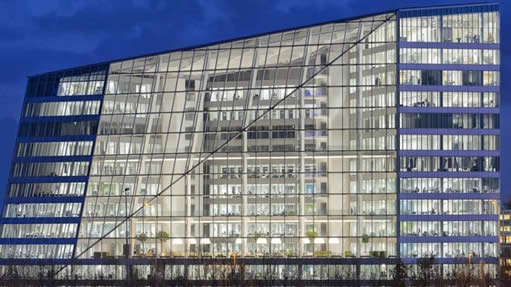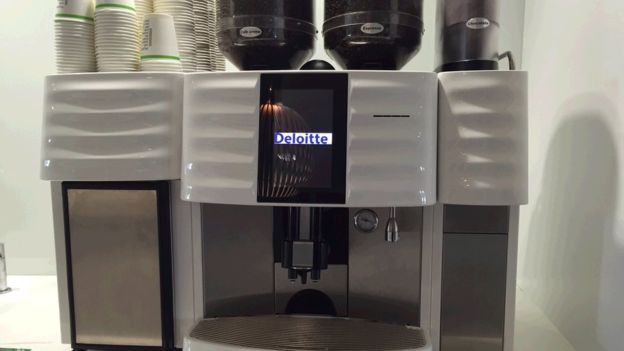
Phone:+86-0773-7590083
Email:
hengtai588@163.com
Working time:8:30-17:30
(Mon. to Sat.)
Address:6-5F, Guimo Road, Creative Industry Park of National High-tech Zone , Guilin, China.
Source: BBC

The Edge office building in Amsterdam prides itself on good coffee, lots of natural light - no desk is far from a window - and a gym that allows you not just to get fit but also to contribute to the energy supply of the office.
It also flushes its toilets with rainwater, has a robot security guard that will challenge you if you wander around at night and a whole range of clever technology to make the building sustainable.
The developers behind it, Dutch firm OVG, liked it so much that they moved in when it was finished.
So is the office that has already been dubbed the world’s greenest, really as smart as it seems?
The building, whose main tenant is consultancy firm Deloitte and was designed by London-based architects PLP Architecture, boasts "smart" ceilings embedded with 28,000 sensors, which measure temperature, light, motion and humidity. The lighting, designed by Phillips, is also smart - each one of the LED panels is ultra-efficient and requires only a tiny amount of electricity.
Workers can control the temperature, lighting and blinds via a series of apps on their smartphones and work is ongoing to unify them.
Users choose the temperature they want from a sliding gauge on their phone and it will in turn adjust the valves in the pipes above their head. Each valve controls the temperature of around four desks so they do have to hope that the colleague sitting next to them is also happy with the change.
Facilities manager Wybe Van der Mey tells me, with some degree of pride, that in the first year of opening he only received a handful of complaints about the heating.
"In a traditional building that would be our headache number one," he said.
Workers can also use one of the apps to book meeting rooms, open lockers and check in to their desks.
When The Edge first opened its doors in September 2014, around 20% of the workers checked themselves in via the app. That quickly fell to 10% and is now at around 1%, according to Mr Van der Mey.
"We hoped everyone would check in to their desks daily but they haven’t done that."
Each floor of Deloitte’s office is laid out exactly the same, making it the ultimate hot-desking environment. It should in theory mean the firm can allocate desks - if people used the app.
"The dream of a facilities manager is to tell people where to go based on available space. Technically it is possible, but behaviourally it is not. People want to go to the same place every day and sit with their peers."
Neither is the app-based system to book meeting rooms running entirely smoothly. Many don’t use it, leading to double-booked rooms, while others book rooms that they never intend to use because it gains them an extra parking space.
It is unclear how many use the stickers with QR codes which adorn all the meeting rooms, allowing users to connect to everything inside the room via their smartphone - including powering up the 4K screens to show their own presentations, controlling the lighting and heating and even lowering the blinds to stop their audience from daydreaming out of the window.

There is no doubting The Edge’s green credentials however.
In December 2014 it received the highest ever BREEAM (Building Research Establishment Environmental Assessment Methodology) which has become the de facto test for sustainability in buildings.
It got an outstanding rating with the highest-ever score of 98.36%, making it a star pupil in a business world that is increasingly being pushed to go green.
It means that Mr Van der Mey has become used to a new job role - as tour guide. He has hosted architects, developers and news outlets and rejected a request from the Amsterdam tourist board to show a group of Chinese tourists around the building.
They come to see a range of features, including an innovative approach to solar power.
When it became clear to developer OVG that covering the roof with solar panels was not going to be enough to provide 100% of The Edge’s electricity it turned to its neighbours - the VU University of Amsterdam and the Amsterdam University of Applied Sciences - to install a further 4,100 sq m (44,100 sq ft) of solar panels on their rooftops in return for the free use of any spare electricity.
The slanted atrium also has a job to do - draining off rainwater to be collected in troughs and reused for cleaning and flushing the toilets.
The building is doing its bit to encourage its workers to go greener. There is a huge space for bikes and a whole wall dedicated to electric car charging points in the underground car park.
The building is heated and cooled via an aquifer thermal energy storage system. Hot water is stored in wells in the ground during summer to help heat the building in winter and cold water in the same way in the winter to cool the building in the warmer months.
There are no radiators in the building - all the heating is provided by cables that run through the ceilings. One carries data and the other water to provide an ambient temperature across the whole structure.
Both Deloitte, the building’s main tenant, and OVG, the developer, are open about the fact that The Edge is an experimental project and that not everything has worked.
One of its biggest challenges is making sense of the mountains of data generated by the sensors.
Maintaining the smartness of The Edge has, Mr Van der Mey jokes, turned his hair grey.
"It is challenging to cope with all the data and we are still learning how to read it," he told the BBC.
For the moment the answer lies in data dashboards, which both the facilities teams and workers can access.
It displays a variety of real-time data points - including the number of workers in the building at any given time, how many visitors, energy consumption and temperature.
It also has some more fun data sets, such as a pie-chart showing how much coffee, and what type, is being consumed in the building at any given time.
It became apparent from the data that lattes and cappuccinos were by far the most popular choice, meaning milk was frequently running out so Deloitte asked the manufacturer to make a new bespoke model with a larger compartment for milk - a real world example of how access to data can improve working lives.

Every coffee machine is also connected to the internet, meaning facilities staff can see which ones are getting low and refill them before someone finds it empty.
The towel rails in the bathrooms are similarly connected.
The hours that cleaners work have also been changed as a result of the data and Mr van der Mey is keen for this to happen more often.
"We want to predict how things will happen in the building - that will be the really smart thing," he said.